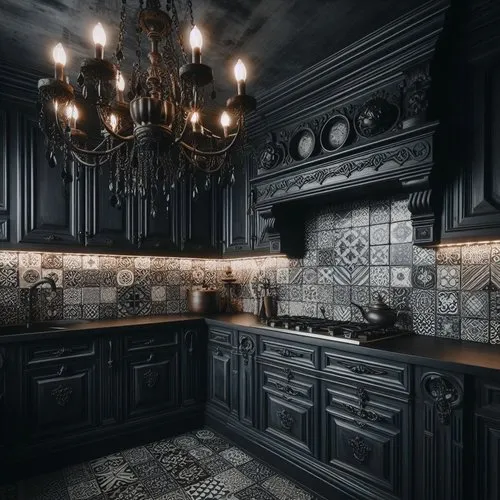Gothic Kitchen Decor Mistakes
Creating a gothic kitchen can transform your home into a space of dramatic elegance, but it’s easy to stumble into common design pitfalls. These mistakes can lead to a kitchen that feels more like a cliché than a chic gothic haven. This guide will help you identify and avoid these errors, ensuring your gothic kitchen is a stunning testament to your unique style. By understanding what to avoid, you can confidently design a kitchen that reflects your love for gothic aesthetics while remaining functional and inviting. The key is to strike a balance between the dark, mysterious elements of gothic design and the practical needs of a modern kitchen. Let’s explore the common mistakes and how to navigate them to achieve a perfect gothic kitchen.
Overdoing the Darkness
One of the most common mistakes is overdoing the darkness. While deep, rich colors are essential to gothic style, relying too heavily on black or other extremely dark shades can make a kitchen feel oppressive and small. A kitchen should feel welcoming and functional, and an overly dark space can quickly become a deterrent. The absence of light can make the area seem claustrophobic, especially in smaller kitchens or those without ample natural light. Consider balancing dark elements with lighter colors and textures to create a more balanced and inviting atmosphere. Strategic use of light-colored countertops, backsplashes, or even lighter paint on some walls can help counteract the potential gloominess and ensure the kitchen remains a pleasant space for cooking and gathering. Be very careful, it is easy to go too far.
Lack of Contrast
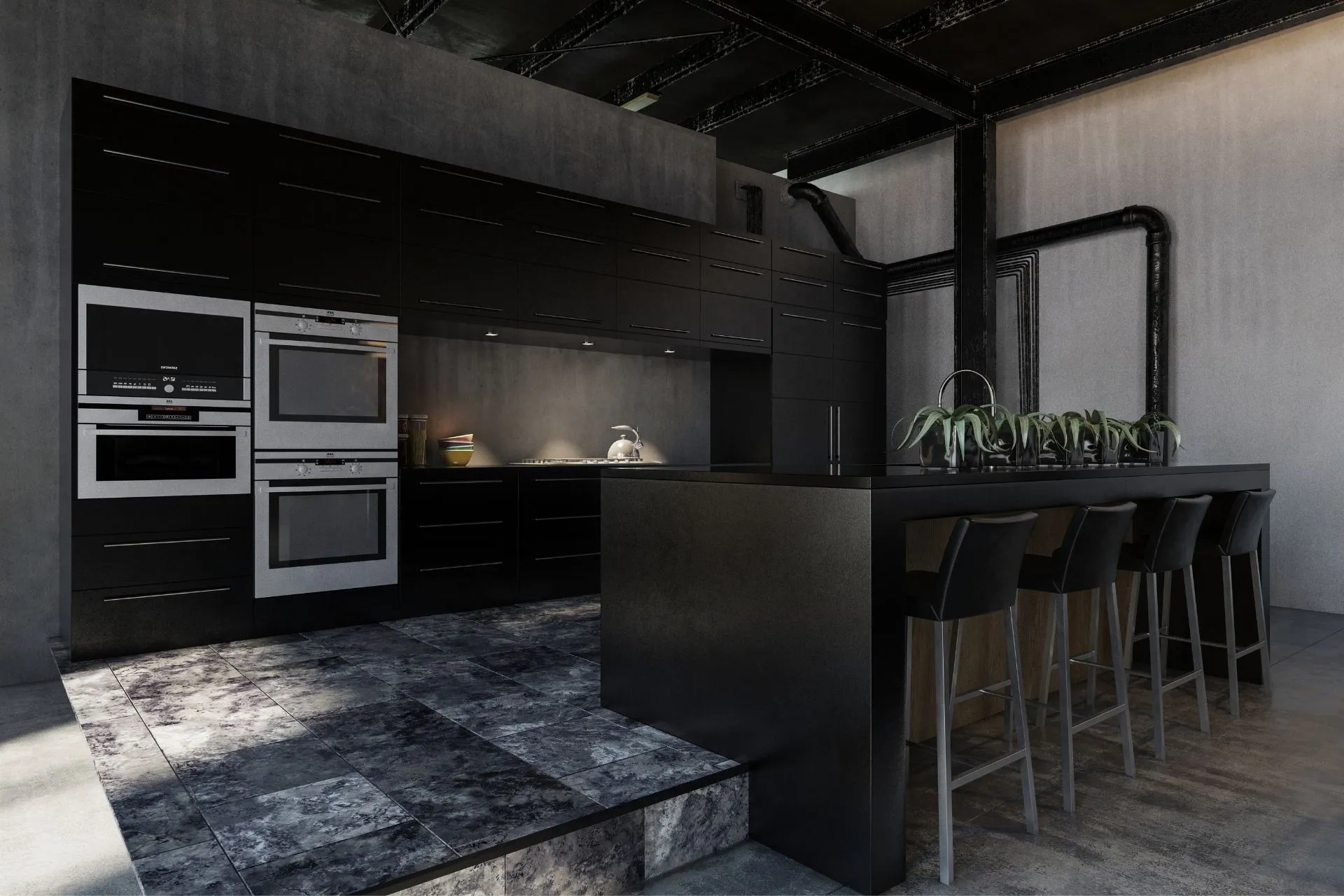
Related to overdoing the darkness, a lack of contrast can make a gothic kitchen appear flat and uninteresting. Gothic style thrives on the interplay between light and shadow, so ensuring a good contrast is vital. Without contrast, the intricate details and textures that define gothic aesthetics can be lost. Incorporating lighter elements, like a cream-colored backsplash or stainless steel appliances, can help to break up the monotony of darker tones. Consider integrating metallic accents, such as brass or silver fixtures, to add a touch of brightness and visual interest. The goal is to create a dynamic space where the different elements complement each other. Well-placed pops of color or texture can also serve to prevent the design from feeling dull, and the proper balance will enhance the overall sophistication of your gothic kitchen. The effect could be very elegant.
Ignoring Functionality
A common mistake is prioritizing aesthetics over functionality. While design is crucial, a kitchen must also be practical for everyday use. Ignoring this aspect can lead to a beautiful but frustrating space. Ensure that your gothic kitchen design incorporates elements that support efficient cooking and food preparation. Consider the layout, storage solutions, and ease of access to all areas. Design choices that compromise functionality, such as impractical countertops or poorly placed appliances, will quickly become a source of frustration. Ensure the design works well, with everything positioned in the best place. If you make sure to design first, you can focus on the decor later on.
Inconsistent Theme
Gothic style encompasses a variety of sub-themes, and a lack of consistency can lead to a confusing and underwhelming kitchen. It’s important to establish a clear theme and stick to it. Are you aiming for a medieval gothic look, a Victorian gothic aesthetic, or a more modern interpretation? Ensure that all the design elements, from the cabinetry to the hardware to the accessories, align with your chosen theme. Mixing styles haphazardly can create a cluttered and unattractive space. Carefully consider each element and ensure that it contributes to the overall atmosphere you’re trying to achieve. Decide on what aspects you like, and stick to them.
Missing the Details
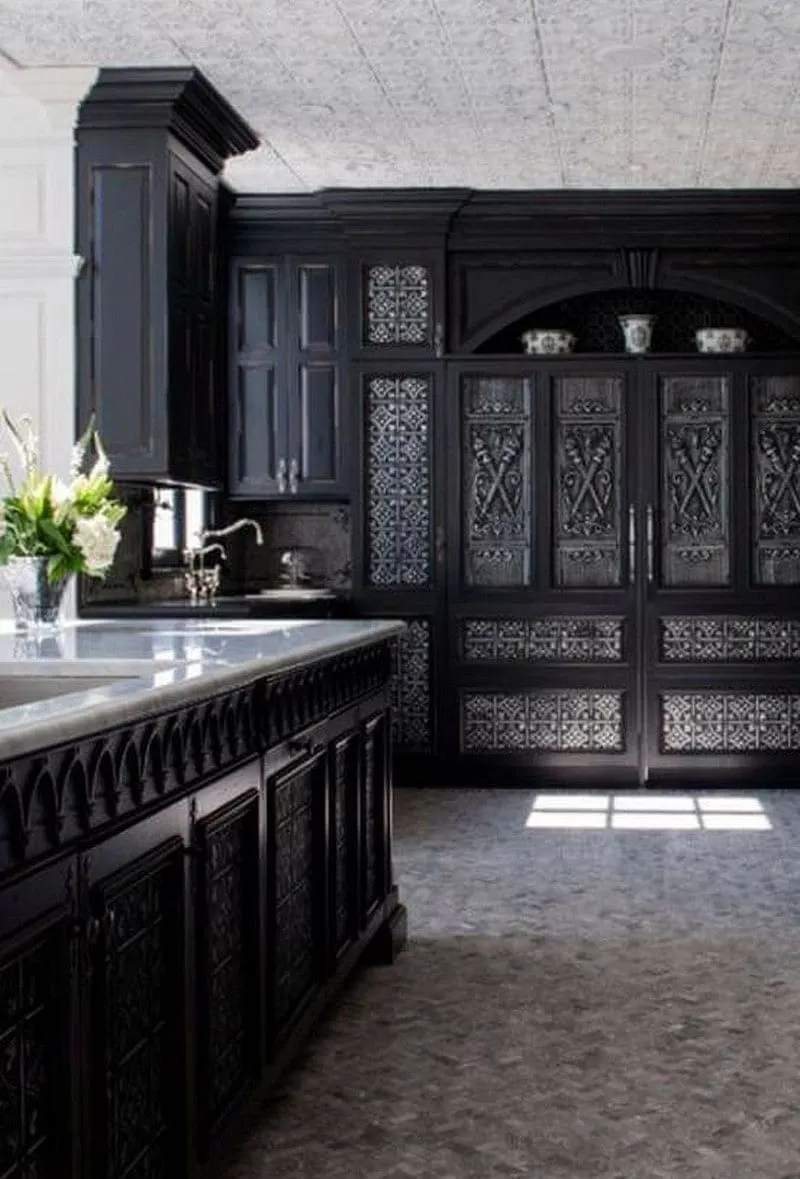
Gothic design is all about the details. Missing these essential touches can undermine the entire aesthetic. Intricate carvings, ornate hardware, and dramatic accessories are what truly define a gothic kitchen. Ensure that you pay close attention to these small but significant elements. Choose cabinet handles and knobs that reflect the gothic style, such as wrought iron or antique brass. Incorporate gothic-inspired artwork, candles, or decorative objects to enhance the atmosphere. Without these details, your kitchen may look generic rather than gothic. The more you do, the better the result. These details contribute to the overall richness and authenticity of the design. The details make the difference.
Choosing the Wrong Materials
The selection of materials plays a crucial role in the overall look and feel of a gothic kitchen. The wrong choices can significantly detract from the desired aesthetic. Avoid cheap or unsuitable materials that undermine the quality of your design. Opt for durable and thematic materials that align with the gothic style, such as dark wood, stone, or metal. Steer clear of materials that appear out of place or detract from the gothic ambiance. For example, consider using granite or marble countertops instead of laminate. Choose wood cabinetry that has a rich grain and finish. Select metal accents, such as iron or bronze, to emphasize the gothic style. The right material will give an immediate result and create a strong visual impact.
Not Enough Lighting
Lighting is crucial in any kitchen, but it’s especially important in a gothic design to prevent the space from feeling gloomy. One of the biggest mistakes is not incorporating enough lighting to illuminate the area. Relying solely on a single overhead light can create shadows and make the kitchen feel dark and uninviting. Implementing a layered lighting scheme is essential for achieving the desired gothic aesthetic. Combine ambient, task, and accent lighting to create a well-lit and visually appealing space. Consider adding under-cabinet lighting to illuminate countertops, pendant lights above the kitchen island, and dimmable lights to adjust the mood. Remember, it is easy to do too much.
How to Correct These Mistakes
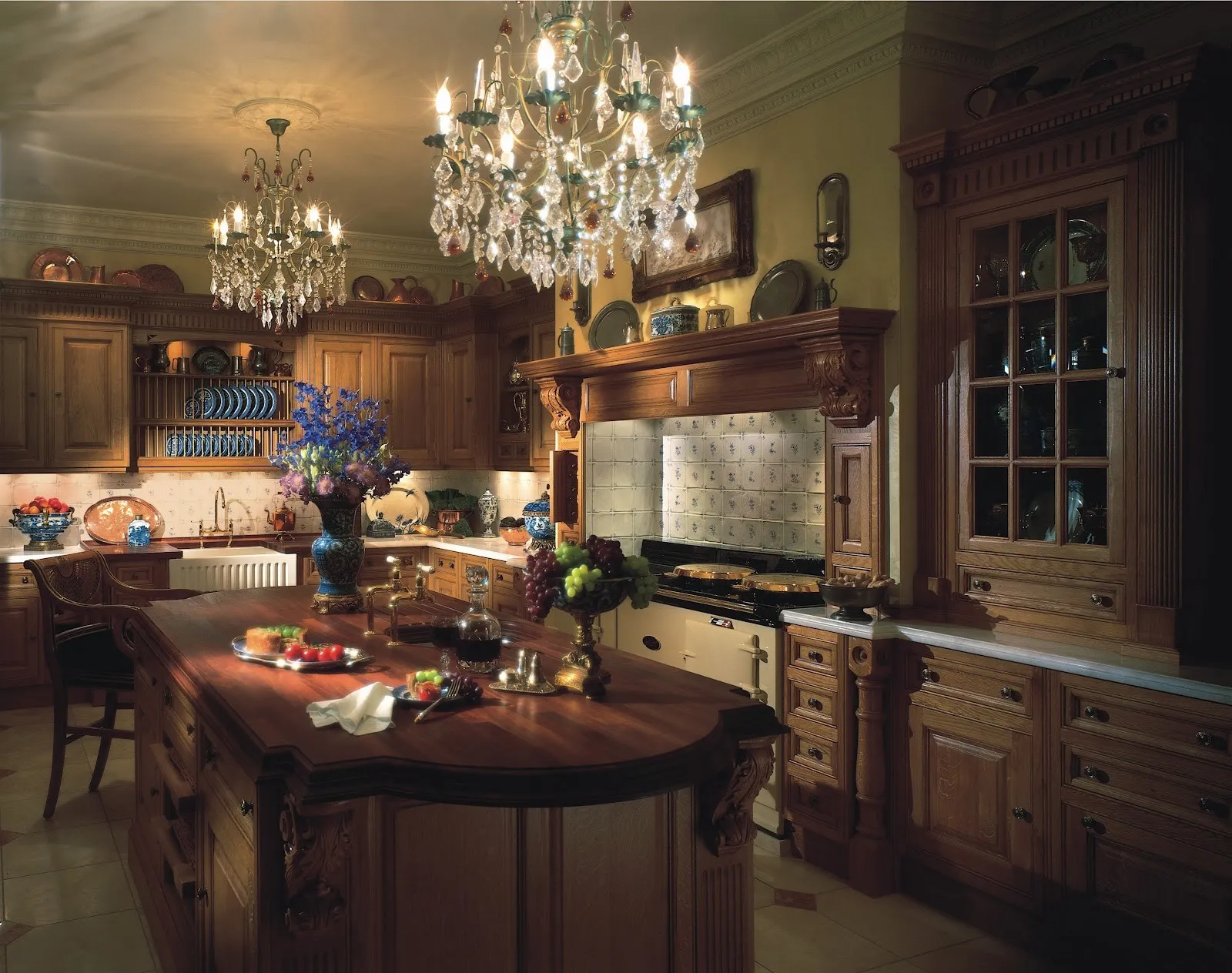
Balancing Darkness and Light
To fix the mistake of excessive darkness, incorporate lighter elements to balance the darker hues. Use light-colored countertops, backsplashes, or even a lighter shade of paint on some of the walls. These lighter surfaces will reflect light and prevent the kitchen from feeling too enclosed. Integrate metallic accents, like brass or silver fixtures, to add brightness and visual interest. Consider incorporating large windows or installing a skylight to maximize natural light. The goal is to strike a balance between the dark, mysterious elements of gothic design and the practical needs of a well-lit kitchen. The right balance will create a great aesthetic.
Incorporating Metallic Accents
Metallic accents are an effective way to add contrast and visual interest to a gothic kitchen. Choose fixtures, hardware, and decorative items in materials like brass, silver, or wrought iron. These accents will add a touch of brightness and elegance, breaking up the monotony of darker tones. The metallic elements create a striking contrast against dark wood, stone, or painted surfaces. Consider incorporating metallic details in the lighting fixtures, cabinet hardware, and even the kitchen appliances. Make the right selections and your kitchen will be on the right track.
Prioritizing Functionality
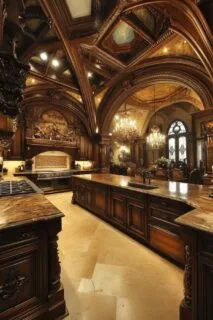
To avoid compromising functionality, make sure your kitchen is designed for the user’s convenience. Focus on creating an efficient workflow by properly arranging appliances, storage, and work surfaces. Ensure that there is adequate space for cooking, preparing meals, and entertaining. Maximize storage with drawers, pull-out shelves, and pantry solutions to keep the area clutter-free. Select appliances that meet your needs while blending with the gothic aesthetic. A well-designed kitchen will be both beautiful and practical, making it a pleasure to use. Design it as you will use it.
Developing a Cohesive Theme
Establish a clear and consistent theme to prevent your gothic kitchen from appearing disjointed. Decide on a specific gothic sub-style, such as medieval, Victorian, or modern, and adhere to it throughout the design. Ensure that all design elements, including cabinetry, hardware, fixtures, and accessories, align with your chosen theme. Consistency helps to create a cohesive and harmonious space that showcases the beauty of the gothic style. Research the style to be sure it will be right for you.
Focusing on Intricate Details
Embrace the essence of gothic style by emphasizing intricate details. Incorporate ornate carvings, detailed hardware, and dramatic accessories to enrich the overall look. Choose cabinet handles and knobs with unique designs in wrought iron or antique brass. Add gothic-inspired artwork, candles, and decorative objects to further enhance the ambiance. These details contribute to a rich and authentic aesthetic, transforming your kitchen into a true gothic haven. Don’t be afraid to put in the effort.
Selecting Durable, Themed Materials
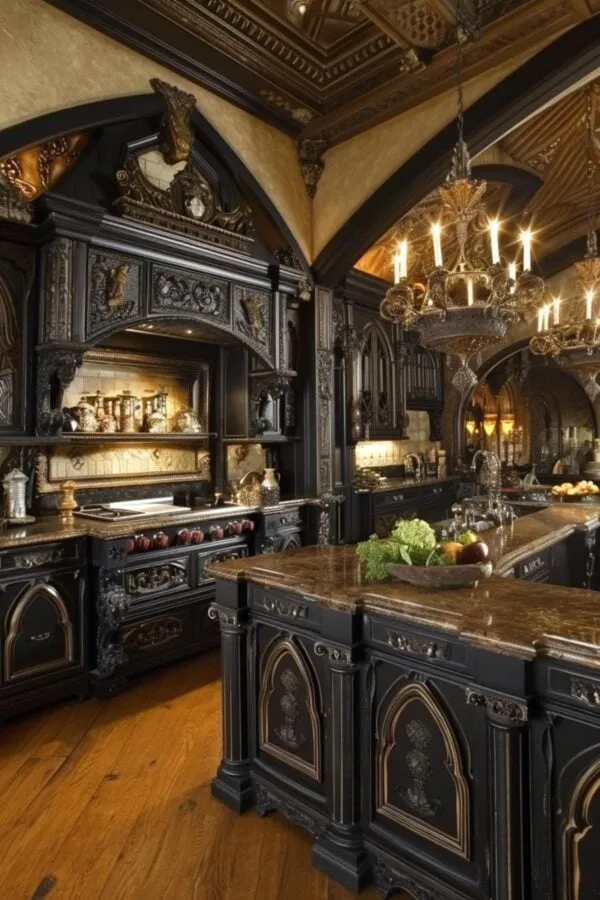
To correct the mistakes of poor material choices, opt for high-quality, durable materials that complement the gothic style. Choose dark wood, stone, and metal to establish the gothic aesthetic. Select materials that reflect the rich history and craftsmanship of gothic design. Instead of laminate, consider granite or marble countertops. Utilize wooden cabinetry with a deep grain and finish, and incorporate metal accents, like iron or bronze. The right material choices ensure your kitchen is both beautiful and long-lasting, reflecting your commitment to quality and design.
Implementing Layered Lighting
To correct the lack of sufficient lighting, implement a layered lighting scheme. Combine ambient, task, and accent lighting to create a well-lit and visually interesting space. Use overhead lights, such as chandeliers or pendant lights, as the primary source of illumination. Add under-cabinet lighting to illuminate countertops, improving the functionality and adding depth. Incorporate dimmable lights to adjust the mood and create a sense of drama. A well-lit gothic kitchen will be inviting and functional, reflecting the best aspects of gothic design. Use the right combination to get the best results.
By avoiding these common mistakes, you can create a gothic kitchen that is both beautiful and functional. Remember to balance darkness and light, prioritize functionality, and focus on the details that define the gothic style. With careful planning and attention to detail, your gothic kitchen will be a stunning reflection of your unique style. The final result will be a work of art. Follow these tips to ensure your kitchen looks amazing.
